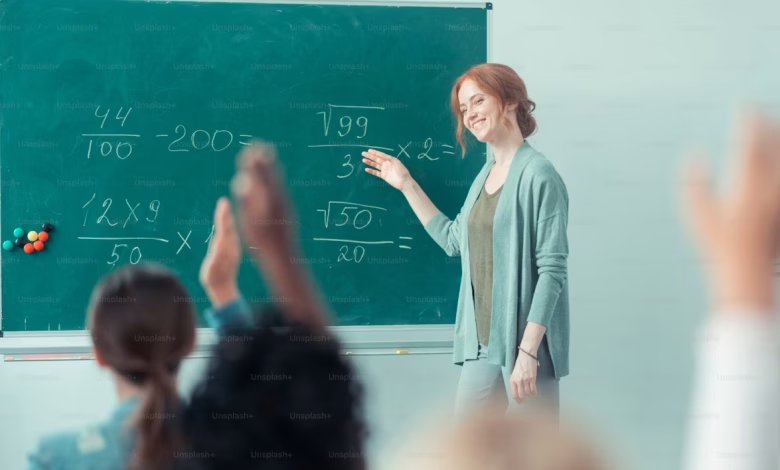
Teaching has always been a demanding profession, balancing lesson preparation, grading, and the ever-changing needs of students. For many educators, the time spent on creating detailed lesson plans often comes at the cost of building meaningful connections with their students. That’s where AI-driven lesson planners are making a difference. By automating repetitive planning tasks, these tools give teachers more space to do what they do best: teach, inspire, and support their students.
The rise of AI in education doesn’t mean replacing teachers—it means empowering them. With AI lesson planners, teachers can generate structured, personalized plans in minutes instead of hours. The software can suggest activities, align lessons with curriculum standards, and adapt material for different learning styles. This efficiency not only reduces stress but also creates more room for creativity in the classroom. For schools facing teacher shortages, these tools provide an essential lifeline, helping educators manage workloads without sacrificing quality.
Why AI Lesson Planners Matter Now
The pandemic changed education forever, highlighting both the strengths and weaknesses of traditional teaching methods. Teachers learned to juggle online platforms, hybrid classrooms, and new student needs, all while under immense pressure. Many burned out, not because they lacked passion but because their administrative burdens grew heavier. AI lesson planners are designed to lift that weight. They can quickly create outlines, suggest engaging activities, and even recommend adjustments based on student performance data.
Jeff Deutsch, Growth Leader at Superpower, has seen firsthand how automation drives efficiency.
“I’ve spent my career helping tech companies scale, and the parallels in education are striking. At Superpower, we’ve seen how AI can reduce repetitive work by up to 70 percent, freeing professionals to focus on strategy and connection. I think the same applies to teachers—when the busywork is automated, they can put more energy into mentoring and guiding students. That shift changes outcomes, not just workloads.”
This shift means teachers are no longer spending evenings buried in paperwork. Instead, they can use their time to focus on student growth, one-on-one feedback, and interactive teaching. As more schools adopt AI planners, we’re likely to see higher engagement levels and better results across classrooms.
How Teachers Benefit Beyond Planning
AI lesson planners go beyond writing outlines—they also help personalize learning. Every student learns differently, and teachers often struggle to create materials that work for both advanced learners and those who need extra support. AI can recommend differentiated activities, ensuring no student is left behind. The technology can also provide real-time insights, showing teachers which areas students are struggling with and where they’re excelling. This allows educators to adjust their approach immediately rather than waiting until test results reveal gaps.
Jon Wayne, Co-Owner of The Venue at Friendship Springs, shares how planning and creativity align in both business and education.
“When we designed our venue, we studied dozens of event spaces to see what worked best. That taught me how structure and creativity need to balance for success. I see the same lesson for teachers using AI planners—technology gives structure, but the heart of teaching comes from creativity and human connection. Freeing teachers from routine tasks means they can invest that energy where it matters most: with their students.”
This blend of efficiency and creativity is reshaping classrooms. Teachers can now focus on building deeper relationships with students, encouraging curiosity, and supporting emotional well-being. AI handles the framework; teachers bring the soul.
The Role of AI in Long-Term Growth
Beyond individual classrooms, AI lesson planners have the potential to transform schools at a systemic level. When schools adopt these tools, administrators gain valuable data on performance trends, curriculum coverage, and teacher workload distribution. This insight can inform hiring, training, and budgeting decisions, helping schools operate more efficiently. AI also supports equity, ensuring that every classroom has access to high-quality resources, even if teaching experience varies across staff.
Sreekrishnaa Srikanthan, Head of Growth at Finofo, sees similar benefits in fintech.
“In finance, we use automation to simplify complex processes and give people more clarity. At Finofo, our systems cut hours of manual work into minutes, which changes how teams operate. I believe AI in education does the same—turning complicated lesson planning into simple, streamlined steps. The more time teachers save, the more they can focus on students’ futures, which is where the real value lies.”
This long-term impact matters because education is not only about test scores—it’s about preparing the next generation to thrive. When teachers are supported, students benefit, and schools create stronger learning environments overall.
Conclusion
AI lesson planners are more than a convenience—they represent a shift in how we value teachers’ time and energy. By taking over routine planning, these tools allow educators to concentrate on the human side of teaching: building relationships, inspiring creativity, and guiding students through challenges. The insights from leaders like Jeff Deutsch, Jon Wayne, and Sreekrishnaa Srikanthan show us that automation doesn’t replace passion—it amplifies it.
For teachers, this means fewer late nights spent on paperwork and more meaningful moments spent with students. For schools, it means smarter systems and stronger outcomes. As AI becomes a natural part of the classroom, the future of education looks brighter, more efficient, and more focused on what truly matters: helping students succeed.




